Matador Network's Blog, page 520
March 2, 2022
You Can Now Skip the Line at Select Airport Starbucks Locations

One of the perks of getting to the airport in the suggested window of two-to-three hours before takeoff is the high possibility that you’ll be able to have something other than in-flight pretzels and a small beverage before arriving at your destination. For many people, that means a stop at Starbucks for their favorite beverage and maybe a breakfast sandwich or a warmed croissant. Unless, of course, everyone had the same idea and the line is longer than the TSA line. Now, some airport locations are letting customers skip the line and take advantage of the mobile ordering service that you’ll find at non-airport Starbucks locations.
One in four transactions at Starbucks is now placed on the company’s app, according to USA Today. Airport locations have not been able to offer the service in the past because they’re licensed locations rather than company owned.
The Washington-Dulles International Airport became the first to offer the service in June 2021, and Starbucks has slowly and quietly rolled out the service to more than 230 licensed stores in 70 US airports. Main hub cities that offer the service include Atlanta, Chicago, New York, Los Angeles, Dallas, Orlando, and Seattle, Starbucks spokesperson Nick Sampogna told USA Today.
Before heading to the airport, you can check if the Starbucks locations inside offer the mobile ordering service by clicking “order” on the Starbucks mobile app and searching for the airport locations. Note that it’ll often include the word “airside” to indicate that the Starbucks is past airport security. Then click on the “i” for information about the store, like its hours and if it has mobile ordering.
So the next time you’re waiting in the ticketing line or at TSA, hop onto the mobile app. You may be able to finish putting your order before you have to take off your shoes and put all your electronics in the bin. 
These Gorgeous Yosemite Cabins Put You Near the Park’s Best Attractions

Yosemite National Park is known for its ancient sequoia trees, waterfalls, towering granite monoliths, deep valleys, and the granite cliffs of El Capitan and Half Dome. The national park undoubtedly is a place to experience new adventures and immerse yourself in all the landscapes and other landscapes showcased in Yosemite National Park. From luxury cabins to secluded cabins to dreamy a-frame cabins, to other Yosemite cabins. it’s time to indulge yourself in Yosemite’s natural beauty, wildlife, and scenery with Yosemite cabins that will surely make this a memorable trip.
We hope you love the Yosemite cabins we recommend! Just so you know, Matador may collect a small commission from the links on this page if you decide to book a stay. Listed prices are accurate as of the time of publication. See our full Advertiser Disclosure here.
1. Luxury 2,500 feet cabin with a covered deck
Photo: Airbnb

Photo: Airbnb

Photo: Airbnb

This luxury 2,500 feet cabin is the perfect place to create memorable memories on your Yosemite getaway. This cabin has a fully equipped kitchen ideal for families or groups wanting to have a night in and cook dinner. There is also a spacious living room for entertaining and relaxing after a long day outside, as well as a covered deck with a comfortable nine-foot sofa to spread out on if you’re feeling more of a relaxing moment in nature.
Ten guests, three bedrooms
Price: $850 per night

Photo: Airbnb

Photo: Airbnb

Photo: Airbnb

Photo: Airbnb
This creekfront a-frame cabin is located in the mountains and 20 minutes away from Yosemite’s North entrance. This cozy cabin features high peaked ceilings and expansive glass windows where you can immerse yourself with all of the natural beauty that the cabin is surrounded by. The cabin has a modern-themed interior throughout, and its luxury amenities include a fully equipped kitchen and spacious living room. Enjoy what nature offers with the outside patio with a seating area and tv and the soothing sound of the creek in the background.
Seven guests, three bedrooms
Price: $425 per night

Photo: Airbnb

Photo: Airbnb

Photo: Airbnb

Photo: Airbnb
Here is another dreamy a-frame cabin that is tucked away from the world. Just 17 miles out from Yosemite National Park is this a-frame cabin that features a spacious kitchen and living room. The open and bright living room has a fireplace and large floor-to-ceiling windows that bring in natural light. If guests want to get out and enjoy the fresh air, the cabin has a wrap-around deck with multiple seating areas to enjoy a glass of wine or cup of coffee.
Eight guests, four bedrooms
Price: $450 per night
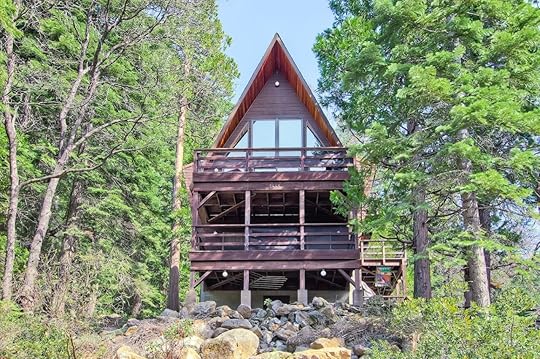
Photo: Airbnb

Photo: Airbnb

Photo: Airbnb

Photo: Airbnb
This three-story a-frame cabin was built in the late 70s has over 2,100 square feet of space between each level. The spacious living room has floor-to-ceiling windows and features a wood-burning stone fireplace. There is a deck that gives off panoramic views of the Sierras.
Eight guests, two bedrooms
Price: $530 per night

Photo: Airbnb

Photo: Airbnb

Photo: Airbnb

Photo: Airbnb
Check out this charming and quaint cabin located inside Yosemite National Park. This cozy cabin was fully remodeled in 2020 and features a fully stocked kitchen, spacious living room, a back deck with a fire pit table, BBQ grill, jacuzzi, and a trail that leads straight down to the creek. This cabin is the perfect space for those couples looking for a quiet and intimate setting.
Four guests, one bedroom
Price: $235 per night

Photo: Airbnb

Photo: Airbnb

Photo: Airbnb

Photo: Airbnb
Use this modern and peaceful cabin as your home base for your Yosemite getaway. This quiet cabin has a living room a full kitchen. With its queen bed in one bedroom, a pull-out sofa, and two memory foam rollaway mattresses, the cabin can sleep up to six people. There is also a vast deck area with a propane fire pit and BBQ grill where guests can sit out and enjoy the weather and fresh air along with the hot tub.
Six guests, one bedroom
Price: $303 per night

Photo: Airbnb

Photo: Airbnb
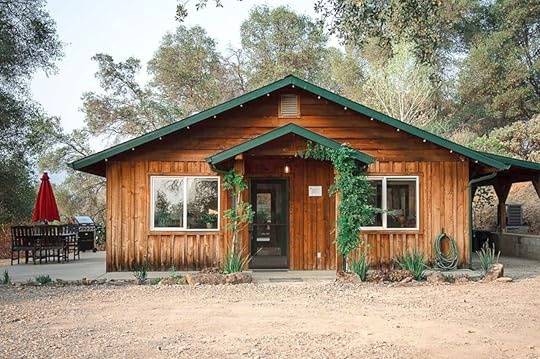
Photo: Airbnb

Photo: Airbnb
If you’re looking for a secluded place to unwind from reality or a couples getaway to remember, then this remote cabin is one of the best Yosemite cabins that is calling out to you. This new cabin is a spa retreat that gives you everything you need for a relaxing and peaceful getaway. The place sits right above the Chowchilla river canyon on ten private acres. If you’re ready to dive into a relaxed mode, there is a hot tub, hammocks, a cozy Adirondack chair, and a beautiful garden in the back to sit and enjoy.
Four guests, one bedroom
Price: $375 per night

Photo: Airbnb

Photo: Airbnb

Photo: Airbnb
This modern cabin was built in the 70s and has been fully remodeled with an elevated look and feel. The place has an expansive open floor plan that features a fully equipped kitchen a spacious living room with floor-to-ceiling windows. There is a wrap-around deck perfect time to take in the stunning views and an early morning cup of coffee.
Six guests, two bedrooms
Price: $795 per night

Photo: Airbnb

Photo: Airbnb

Photo: Airbnb

Photo: Airbnb
This spacious and private cabin is ideal for all travelers alike. The modern cabin features a full kitchen and living room. The home is secluded for those looking for more of a quiet scene for a Yosemite vacation. There is a vast outdoor deck with a built-in BBQ for those sunny days outside.
Six guests, two bedrooms
Price: $592 per night

Photo: Airbnb

Photo: Airbnb

Photo: Airbnb

Photo: Airbnb
This scenic Yosemite cabin has the most panoramic Yosemite cabins views and its nestled in tall pine trees showcasing the gorgeous forest views. This cabin was recently renovated with the main living room area with a cathedral ceiling, sand custom cabinets made of rough sawn cedar, a soaring stone fireplace, and a newly built fully equipped kitchen. There is also a deck area with a grill and seating area. 
Nine guests, three bedrooms
Price: $644 per night
Ivanhoe Village is the Artsy Side of Orlando You Didn’t Know Existed

The mere mention of Orlando, Florida evokes thoughts of theme parks, crowds, and larger-than-life attractions. It is the quintessential family vacation spot that every child dreams of visiting, and that inspires some obsessed adults to don their mouse ears and visit every year. Theme parks might be the focus of these getaways, but you should add Ivanhoe Village to your itinerary, too.
Still, there are probably some single adults, and even families, who may feel immune to the call of the city. Or there might be those Disney fans who, as much as they love the roller coasters and parades, might need a break from the relentless child-like cheer of the theme parks. That’s why discovering Ivanhoe Village, a little pocket of Orlando away from the madness of Disney, is so exciting and refreshing. With more than 50 local activities, shops, and restaurants that offer everything from custom art to craft beer. Ivanhoe Village is Orlando’s little-known artsy corner.
It is (almost) always sunny in Ivanhoe, a pedestrian, pet, and bike-friendly area adorned by palm trees and colorful storefronts. Located lakeside, it is a reprieve from the Orlando you think you know and home to events like the Orlando International Fringe Theater Festival. Come to connect with nature, learn from talented and artistic residents and dine on unexpected cuisine. Here are eight unmissable activities and restaurants in Ivanhoe Village.
Epic Paddle OrlandoView this post on InstagramA post shared by Epic Paddle Adventures (@epicpaddleorlando)
Epic doesn’t begin to describe the sunsets on this tour, prominently featuring the Orlando skyline. This isn’t like regular standup paddle boarding – this is a much more adult version with music, beer and uninhibited dance moves by the guides that are impressive considering the balancing required. Epic Paddle Orlando sends photos of the experience to all guests after so there’s no need to worry about having your phone or camera out on the water– you’ll still get to post that epic shot to Instagram after your excursion has ended.
Where: 1600 N Orange Ave, Orlando, FL 32804
The Hammered LambThe Hammered Lamb is a classic neighborhood pub with a twist – lamb is featured prominently on the menu, breathing new life into old favorites like sliders, quesadillas, and paninis. Word of the bar spread quickly in part due to their free “train shots,” complimentary whenever a train passes by. Bonus – they’re environmentally conscious and do not utilize single use plastics or foam containers.
Where: 1235 N Orange Ave, Orlando, FL 32804
Ivanhoe Park Brewing Company
Photo: Courtesy Visit Orlando
Ivanhoe Park Brewing Company is a craft beer company that opened in 2018 and is distributed throughout central Florida. They have four core brews – an IPA, Belgian witbier, golden pilsner and blonde ale. The best way to sample them all is to order a flight. Tours of the brewery are available upon request and they also host special events like a dog afternoon every second Sunday of the month. The brewery also offers trivia, watch parties and “Take One Home Tuesday” with half off refills on branded growlers.
Where: 1300 Alden Rd, Orlando, FL 32803
Better than SexView this post on InstagramA post shared by Better Than Sex – Restaurant (@betterthansexdesserts)
Sure, sex is great, but have you ever tasted decadent desserts in a dimly lit, romantic setting? That’s what Better Than Sex offers its adult diners, with only 10 seats in a seductive atmosphere. From the risque names of the desserts to the drinks served, it is a more flirtatious version of date night – so be sure to bring someone you really love. Reservations are a must due to limited capacity and high demand.
Where: 905 N Orange Ave, Orlando, FL 32804
Maffrey’sView this post on InstagramA post shared by Gifts · Home · Bar · Pet (@maffreysgoodgoods)
Maffrey’s is a boutique gift shop featuring a carefully curated collection of locally made items, from candles to cocktail infusions. You can find eclectic home goods here that would be great gifts, but who could blame you if you kept a couple treats for yourself: There are sweet smelling soaps, chocolate bars, and hot sauces to name just a few tempting items. The shop opened in 2020 and has thrived in part because of their commitment to “good goods,” meaning products that have a positive social impact. The shop was also named Best of Orlando in 2021.
Where: 1231 N Orange Ave, Orlando, FL 32804
Luna Mosaic Arts
Photo: Courtesy Visit Orlando
Interested in crafting? You’ll find supplies and instruction to create your mosaic masterpiece at Luna Mosaic Arts. The shop offers classes and projects suitable for all skill levels. This female-owned establishment also serves as a workspace for rent and is open to artists.
Where: 813 Virginia Dr, Orlando, FL 32803
Something DifferentSomething Different is a vintage furniture shop with chairs and couches from all eras and jazz music playing for shoppers to get you in the right state of mind while browsing. Visitors get a 2-for-1 deal when it comes to their shopping experience, with a new shop inside Something Different called Romancing the Light that features lit up trees, branches and flowers.
Where: 1618 N Orange Ave, Orlando, FL 32804
Succulents EmpireView this post on InstagramA post shared by Succulents Empire LLC
(@succulentsempire)
Succulents Empire is a dream for plant lovers, where anyone with an aspiring green thumb can browse rare and expensive plant varieties, as well as more accessible and easy to care for plants that are appropriate for even beginning gardeners. Opened in 2020, this female, Hispanic-owned shop has gained popularity on TikTok and Instagram. They offer shipping across the country and are lauded for the care shown to their plants.
Where: 1700 N Orange Ave, Suite 200, Orlando, FL 32804 
Process of making Zapotec rugs

Finding the perfect traditional souvenir to bring back from Mexico isn’t a difficult exercise — there is a multitude of culturally rich crafts to choose from throughout the country. When visiting the state of Oaxaca, however, there is one type of memento that travelers should consider over everything else: Zapotec weavings.

Photo: Samantha Demangate
The Zapotecs are an indigenous people of Mexico, who live in the eastern and southern parts of the state of Oaxaca. The Zapotecs are famous for their beautiful hand-woven rugs. Zapotec weavings can be purchased throughout Mexico, but Teotitlán de Valle in Oaxaca is where you’ll be able to fully immerse yourself in the traditional craft. Here you can visit individual studios and see the Zapotec weaving process up close.
Traditional Zapotec weavings are made with natural ingredients native to the region of Oaxaca. Alpaca and sheep wool are the fibers of choice, and they are dyed with locally produced ingredients such as wild tarragon, muicle (a variety of honeysuckle), campeich wood (a native Oaxacan tree), and moss, among many others.

Photo: Samantha Demangate
During the centuries-old dyeing process, the ingredients are generally left to steep in boiling hot water. As they soak, their pigments slowly seep out creating dyes. Each batch of dye is used up to three times and becomes lighter after each use. Before dyeing, the fibers are coated in a mordant, usually potassium alum, so they may absorb the pigment of the dye. The fibers are then bathed into the dye to obtain the color of choice.
The natural ingredients used to dye fibers for Zapotec weavingsBugs provide red pigments
Photo: Samantha Demangate
Cochineal is a curious ingredient that is used to bring shades of red to Zapotec weavings. Cochineal is an insect that resides on the pads of the opuntia cactus, their feast of choice being the cactus’ red fruit. The bright juices of the cactus’ berry concentrate inside the female cochineals, creating a bright crimson color. After the female cochineals are harvested, they are dried in the sun and later ground into a fine powder using a metate (a stone tool used to grind ingredients). The powder is later used to create a rich crimson dye. The red pigment obtained from the cochineals can also be mixed with iron to create purple dye. Iron powder is measured, mixed in cold water, and then added to the red pigment of the cochineal to create a brilliant purple.
Herbs, fruit, and flowers produce every color in the rainbow for Zapotec weavings
Photo: Samantha Demangate
To create a yellow dye for Zapotec weavings, the dried leaves of wild tarragon are steeped in a piping hot vat. Pomegranate husks produce similar shades as tarragon, ranging from a soft yellow to hues of gold depending on the maturity of the fruit used. Pomegranates husks also have the unique ability to produce dark and even black dyes if mixed with iron.
Pecan leaves (browns), marigolds (creams and yellows), and oak wood (browns]) are also boiled in water to create natural dyes, though some require a longer boiling time than others to reveal their colors.

Photo: Samantha Demangate
Indigo creates arguably the richest pigmentations. Derived from the leaves of the añil plant, indigo, unlike other natural ingredients, is not boiled in water. Instead, the leaves are fermented in water, creating a paste that is later dried. This dried mass is then ground into a powder using a metate. The powder is mixed with rubbing alcohol or mezcal and is added to warm water. An alkaline solution is then added to the mix, as the indigo powder cannot be absorbed in water alone. Once dissolved in the solution, an acid such as mango skin or pineapple juice is added and the vat of liquid is left to ferment to create a deep blue. To craft a brilliant shade of green, fiber can be first bathed in indigo and then submerged in a coat of yellow pomegranate dye.
Natural dyes create a brilliant spectrum of colors sure to mesmerize the eyes. They can even compete with synthetic dyes, creating very bright tones you would never have believed can be found in bugs, herbs, flowers, and fruit.

Photo: Samantha Demangate
Many weavers harvest and dry their ingredients themselves. Textile artist Alejandro Gonzalez of Casa Don Juan — Zapotec Weavings in Teotitlán del Valle explains that their weavers harvest their local plant twice a year. “But for some of them [dyeing ingredients] we need to use fresh and collect them when we want the color.” Additional harvests are made when necessary. These fifth-generation weavers strictly use natural dyes, their local flora woven directly into their craft. Many other studios, like Casa Don Juan — Zapotec Weavings grind and prepare their ingredients at their worksite.
Gauging the authenticity of Zapotec weavingsEach textile created with natural dye is unique due to the nature of small batch dyes. Naturally dyed textiles also tend to be slightly uneven, creating a one-of-a-kind, impossible-to-replicate textile.
When purchasing Zapotec weavings, prices tend to be a good indication of quality. As explained by Gonzales, “Most of the weavers, they use synthetic dyes because [the dying process] is fast and they can make many rugs in [a] short time.” Natural dyes require more time and effort resulting in a higher price, whereas synthetic dyes ensure a faster process for the weaver, cutting time and costs.

Photo: Samantha Demangate
But price isn’t everything. When shopping for an authentic naturally dyed Zapotec textile, like a Zapotec rug, location is also a factor. Shopping near a high-traffic area, like an airport, will narrow your chances of finding a quality piece. You will have more luck in designated market places, but your best option is to make a visit to a weavers’ studio. At their studio, you will not only find gorgeous authentic pieces, but you may also be able to view the dyeing and weaving process for yourself.
The studios of Teotitlán del Valle: Where to see the natural dyeing process and buy Zapotec rugsA forty-minute drive from Oaxaca City, Teotitlán del Valle is where you will learn about the Zapotec weaving process right from the source. Here are a few places of interest that interested travelers should visit.
Casa Don Juan — Zapotec Weavings: a family-run business that provides an excellent experience. The weavers create their textiles in an open-air studio consisting of a courtyard and dyeing station on its second level. They are devoted to preserving traditional techniques and are eager to inform their patrons about the craft’s history.Where: Antonio de León 4, Tecutlan, 70420 Teotitlán del Valle, Oax., MéxicoTaller Huella Carmín is a family-owned studio that has been practicing traditional Zapotec weaving for five generations. They have modernized Zapotec weaving practices by crafting precious accessories for pets in addition to traditional textiles like Zapotec rugs.
Where: Emiliano Zapata 6, Tecutlan, 70420 Teotitlán del Valle, Oax., MéxicoTaller Nahualli — Zapotec Weavers is a studio that offers weavings with complex, traditional patterns, as well as geometric patterns with a modern flair.
Where: Av. B. Juarez 214-A, 70420 Teotitlán del Valle, Oax., México
All three studios mentioned above create their own natural dyes, and all three will gladly demonstrate the process for you upon visiting. If you are not ready to commit to purchasing a large piece upon your visit to Oaxaca, all three studios also offer worldwide shipping.
When shopping outside of Oaxaca, the best way to contact many studios is via their Instagram page. Here, you can discuss what they have to offer, worldwide shipping, and possibly even custom-made textiles. 
Watch: Lifeguard Puts Surfers in Their Place After Ignored Order to Not Surf Hawaii’s Pipeline

It’s best to listen to the local lifeguards when it comes to surfing some of the biggest, most challenging spots in the world. Ignoring them could put your life at risk — and those very same lifeguards will have to make the rescue. At best, ignoring the lifeguards will lead to a good old fashioned public shaming. Two novices learned the latter the hard way recently at Ehukai beach Park in Hawaii.
The Oahu surf spot near Haleiwa is famous for its pipeline. It’s a prime, but difficult, surf spot on the best days. On days with the worst conditions it’s downright dangerous.
When two surfers who were clearly not prepared recently tried to take on the waves, they were stopped by a lifeguard who told them not to go out. Then they ignored that advice, and were lucky to have another lifeguard around to set them straight.
“Where are you at, do you even know where you’re going?” the lifeguard asked the surfers. After they tried to reason with why they were going out there, the lifeguard added, “You guys aren’t ready for pipeline. Get out of here.”
The surfers try and cover up with some apologies and excuses, but get chewed out for not following the rules. The lifeguards are there for a reason and they’re the ones out there keeping people alive and safe.
On Reddit, commenters widely agreed with the response the lifeguard had to the two surfers ignoring what they were told to do. As one commenter put it: “Hawaii has tourists skittering around every corner of the state and most of them couldn’t find their own ass with a map. These aren’t your gulf coast beaches with rollers lapping at your ankles. Most beaches have the potential to smoke you at the right time of year. You wouldn’t believe the stupid decisions people make when they don’t understand the ocean.”
Long story short: When a lifeguard tells you not to go out, you don’t question it.
More like thisNewsVideo: Harrowing Rescue Shows Tourist Pulled from 400-Foot Cliff Edge in Hawai’iThis Study Shows what Makes the ‘Perfect’ Campsite — and Why People Pick the Sites They Do

Summer camping season is coming up, and as most hikers know, the process of securing a campsite can be stressful. Getting your group to commit to a weekend and applying for a permit is already a hassle, and then on top of that, you need to make sure you get a good campsite — no one wants to be directly next to a bathroom.
Or do they?
According to research from the University of Montana and Florida Atlantic University published in the Journal of Environmental Management, several conscious and unconscious factors explain why people choose the campsites they do.
To study what makes the “perfect” campsite, researchers looked at 2019 data for the Watchman Campground in Zion National Park, which requires reservations year-round (Zion is one of the most popular parks in the US National Park Service by visitation numbers). They studied at 23,000 park reservations for 179 sites, each of which was rated for factors like proximity to water, bathrooms, and parking lots; whether they had good views; and how close they were to other campsites, among other factors. Unlike other studies, the researchers didn’t do any surveying or polling. Results were based entirely on big data, rather than asking campers to report what they think makes the perfect campsite.
According to their published findings, entitled “Big data spatial analysis of campers’ landscape preferences: Examining demand for amenities,” the factors that ranked the most in decision making were:
1. Access (walk-in vs. drive-in): The study found that campers prefer to drive directly to their campsites rather than requiring a walk. This was the strongest predictor of what makes a perfect campsite, albeit conversely: as the need to walk goes up, demand goes down. Zion National Park accepts reservations up to six months in advance, and walk-in sites tended to fill an average of 11.9 days slower than drive-in sites.
2. Cost: The next most important factor was the nightly rate. Interestingly, the report noted that every $1 increase in cost caused the sites to fill 1.2 days sooner than the less-expensive sites. This could be because sites with electricity cost more and have less availably, or because consumers sometimes see lower prices as a sign that a product isn’t as good.
3. Access to electrical hookups: Specifically, private ones. Of course, only RV campers need electricity, and the study doesn’t account for RV versus tent campers, but the correlation was strong enough that it’s still a top factor.
Factors the researchers found were somewhat important, though not as important as the three above, include:
4. Proximity to amenities: With around 92 percent certainty, the study suggests that being near facilities like restrooms and water spigots was a driving factor in site selection.
5. Nature views: In the case of Zion, researchers felt with a calculated 90 percent certainty that having a view of the canyon was a driving factor in site selection. Sites were views were booked 2.8 days sooner than sites without views. Researchers noted that they expected views to rank higher than it did in influencing site selection..

Surprisingly, proximity to the Virgin River wasn’t a driving factor for campsite selection. Photo: Suzie Dundas
You can read the full report here.
The results led the researchers to theorize that non-natural factors of sites (like cost and manmade amenities) were more important than natural factors (like views). The research found that factors like river access and proximity to other campsites had no positive impact on demand; in fact, it found that sites near the Virgin River booked eight days slower than other sites.
Of course, a major limitation of the study is that researchers studied only campground, and results may be totally different in another park or part of the country. The authors acknowledge this in the study and offer suggestions that their findings may be influenced by park-specific factors, like the fact that Zion National Park has issued warnings against swimming in the Virgin River due to toxic cyanobacteria and E. coli outbreaks. But in another park, being near a river may be a strong selling point.
Regardless, it’s an interesting use of big data to see if campers’ actions as shown by data match their reported preferences (alternatively, do campers actually know why they choose the sites they do?) Says lead author William S. Rice in the findings, “This study is an attempt to further our understanding of the camper’s decision-making process and demonstrate the usefulness of a big data approach in measuring demand for recreational resources.”
We’d love to see more big-data-driven research to understand the psychology of camping, from what kind of foods we cook to why some folks are just happier sleeping on the dirt. 
More like thisNewsTurns Out 10,000 Steps a Day is Kind of BS. Here’s the Real Magic Number.
Where to travel to this spring according to your zodiac sign

If you’re on the market for a holiday this spring, why not travel somewhere based on your zodiac sign! Each of the 12 signs falls into either four elemental triplicities — fire, earth, air, and water — and three modes or qualities indicating where in the season they fall — cardinal (beginning), fixed (middle), or mutable (end). Based on what these represent, you can craft a vacation that’s perfectly aligned with you.
Fire signs are, of course, fiery and passionate. They are dynamic and full of energy and zest for life. They include Aries, Leo, and Sagittarius. Fire signs enjoy being active and participating in engaging, upbeat dynamics, so should plan for plenty of fun vacation activities.
Earth signs are, obviously, earthy. They are rooted and grounded, pragmatic realists with one foot on the ground. This triplicity includes Taurus, Virgo, and Capricorn. Earth signs aren’t afraid of hard work, they have stamina and endurance, and have a particular penchant for nature. These signs would do well with slower, robust travel schedules.
Air signs are the intellectuals and thinkers of the zodiac. They enjoy conversing and dealing with facts and logic, rather than emotions. They include Gemini, Libra, and Aquarius. Air signs need mental stimulation and company, with ample diversity to keep them satisfied. Including cultural and artistic pursuits in travel plans would suit them well.
Water signs are the most in touch with their emotions, intuition, and creativity. They are fluid and flexible, highly attuned to the energy around them. They are Cancer, Scorpio, and Pisces. Being by water is incredibly soothing for them, as their triplicity suggests. Trips that allow for going with the flow, both literally and figuratively, are sure to satiate them.
Cardinal signs come at the beginning of seasons and so would like to take charge on holiday, being the initiators of change. These include Aries, Cancer, Libra, and Capricorn. Fixed signs fall in the middle of seasons and as such prefer more stability and regular itineraries. These are Taurus, Leo, Scorpio, and Aquarius. Mutable signs fall at the end of seasons and prefer more adaptability and room for spontaneity. These include Gemini, Virgo, Sagittarius, and Pisces.
With all that in mind, check out the best travel tips for where your Sun, Moon, or Rising Sign should visit in spring below.
Aries — Big Bend National Park, Texas, US
Photo: Dean Fikar/Shutterstock
Being a cardinal fire sign, and the first in the astrological year, dear Aries, you certainly like to take the lead. You’re a bold pioneer and so places that are relatively untouched (meaning you get to feel like you’re exploring them first), are right up your street. That’s why the magnificent Big Bend National Park in Marfa, Texas, is perfect for you. With almost 802,000 acres of land, including the entire Chisos mountain range and a large portion of the Chihuahuan Desert, you’ll feel like you’re exploring uncharted territory. Its southern border is the flowing Rio Grande, with Mexico on the other side, allowing you to kayak between cliffs that rise up to 1,500 feet — what’s more pioneering than that.
Taurus — Tuscany, Italy
Photo: Jarek Pawlak/Shutterstock
As a fixed earth sign, you’re the most stable of all, Taurus. Being submerged by nature where you can relax and soak it all in, as well as being pampered and indulging in your well-deserved vacation time (you are ruled by Venus after all), is just what you need. This makes Italy the perfect destination for you, it’s got beautiful Mediterranean nature, all the fine art and culture your heart could desire world-renowned designer goods, and some of the best cuisine on the planet. You can relish in all the delicious food your senses can handle while sipping on Tuscany’s finest wines, heaven.
Gemini — Singapore, Singapore
Photo: IamDoctorEgg/Shutterstock
Being mutable air, dear Gemini makes you the most expressive and lightweight of all the zodiac signs. Sitting still is simply not an option for you. You like to be interactive and engaged in your surroundings, traveling in groups suits you well, as does the effervescence of a city break. Singapore has everything you need to keep you entertained- world famous street food scenes, architecture, cultural events, shopping, art, and more. Plus, English is one of the four official languages so you’ll be able to converse to your heart’s delight.
Cancer — Bartlett, New Hampshire, US
Photo: quiggyt4/Shutterstock
The first of the water signs, being near this liquid life-giver can be very healing for you little crab. As a cardinal sign, you also like to be in control of the reins and make plans, based on how you’re feeling in the moment if possible. There are plenty of wholesome options in the state for you to decide on, from beach to mountain — for water locations, Lucy’s Brook in Bartlett is particularly picturesque. It features a series of small pools and cascades all with easy accessibility making it extra family-friendly, which is a bonus for you.
Leo — Canggu, Bali
Photo: Vatchara Ruttikul/Shutterstock
As a fixed fire sign ruled by the sun, your energy knows no bounds, dear lion! Warm, sunny locations are prime for you, where you can laze about and soak up all the rays like your regal feline symbol. It’s also important for you to have plenty to do though, and in style, that’s what makes Canggu such a great travel destination for you. You can cruise around to all the uber Instagrammable cafes, snapping away like the natural influencer that you are while also enjoying a summer beach vibe that never ends. The cliffs and crystal waters of Uluwatu are just a stone’s throw away, as well as the spiritual jungles of Ubud when you need a refresh.
Virgo — The Palouse, Washington, US
Photo: Robert Crum/Shutterstock
Being a mutable earth sign, you enjoy nature and variety. A nurturing environment paired with a diverse schedule suits you well. Being the archetype of the healer, wellness retreats are also especially good for you. Particularly if your ruling planet, Mercury, has been causing you to go down one too many rabbit holes, dear Virgo. The Palouse makes the perfect zodiac travel destination for you because its rolling, verdant pastures are relaxing just to look at. Featuring sublime biking and hiking trails, as well as rivers and waterfalls — there’s every type of nature you could desire to soothe any frayed nerves.
Libra — Savannah, Georgia, US
Photo: Nagel Photography/Shutterstock
One of the most important things for you, dear Libra, is to have a good travel companion — no solo zodiac travel for you. As an air sign you also need a variety of things to keep you engaged, and as a cardinal sign you do like to take the lead, as long as everyone is on board and you don’t have to decide between two options. Known as the lover of the zodiac, ruled by Venus, it’s important for you to choose a beautiful, serene location with an equally stunning hotel. That’s what makes Savanna ideal for you. Its charming avenues, historic squares, picturesque homes, and whimsical moss-covered trees make for the most romantic scenery possible.
Scorpio — Ojai, California, US
Photo: Terry Granger/Shutterstock
A fixed water sign, you like your vacations to have some depth and substance to them, little scorpion. Getting immersed in the landscape and spending time in rejuvenating solitude is ideal for your famously private sign. Ojai makes the perfect zodiac travel destination for you because you can flex your spiritual muscle and escape from the noise for a while. Known as a “calming” energy vortex, set in a valley in the Topatopa Mountains, the city has a village-like center dotted with art galleries and all the New Age shops you need to keep your mystic interest piqued.
Sagittarius — Big Sur, California, US
Photo: kan_khampanya/Shutterstock
As a mutable fire sign, dear archer, you’ve certainly got energy to burn. Long-distance zodiac travel and an adventurous road trip are just your thing. You likely have a bucket list as long as your arm already, but might we suggest adding Big Sur to it if it’s not there already? This dream destination has everything your wandering heart could desire — featuring the longest stretch of undeveloped coastline in the continental US, allowing you to go opt for a favorite pastime of yours — road trips. You can hike the trails at Los Padres National Forest or Julia Pfeiffer Burns State Park, and visit the beach there too, finishing off with the stunning Keyhole Arch at sunset.
Capricorn — Stowe, Vermont, US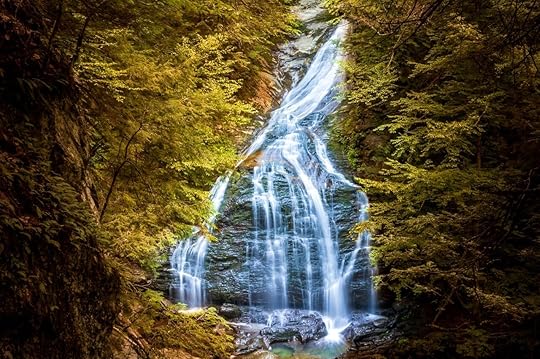
Photo: Kayde Blake Creatives/Shutterstock
The cardinal earth sign known as the CEO of the zodiac, you take your vacationing seriously — because you’ve earned it Capricorn. As a symbol of the mountain goat, Stowe in Vermont is the perfect destination for you because of its postcard beauty and snow-capped mountains allowing you to work hard and play hard, as well as symbolically and physically climb to the top of your mountain. If the weather is good the hiking trails are breathtaking, as are spring colors, and Ben & Jerry’s is based there where they do factory tours almost all year round, yum!
Aquarius — Wrangell St. Elias National Park, Alaska, US
Photo: Galyna Andrushko/Shutterstock
Known as the alternative individual of the zodiac, you prefer your vacation destinations to be a little bit unusual and have something unique about them. Group holidays aren’t your thing, and in fact — the more isolated the better. Enter: Alaska. This zodiac travel destination allows you to get off the beaten track with ease and explore beautiful hiking trails or have overnight camping adventures. You can also go fishing, mountain biking, and kayaking. Finish off your visit with a trip to Natural Rock Face where the landscape has been naturally carved into this unique formation.
Pisces — Everglades, Florida, US
Photo: Simon Dannhauer/Shutterstock
As the final sign of the zodiac, you’re known as the most ethereal. Being mutable water, you absorb and adapt to the energy of your surroundings. This makes where you go and the people you go with very important for you little fish. Being near water will always be calming for you, that’s why Everglades National Park is one of the top travel destinations for you because you can canoe or kayak through cypress forests, mangrove tunnels and marshy estuaries dotted with alligators, fish, and birds — ticking all the aquatic boxes. 
March 1, 2022
These Airbnbs in spring’s hottest destinations are the perfect escapes to soak in the sun

In 2022, after being cooped up in the house, international travel has resumed wholeheartedly, with people jumping in with both feet. In a news release from Airbnb, following the trends of the past year, is becoming irresistable, as the company saw an increase from 20 percent to 35 percent of “cross-border travel” bookings at the tail-end of 2021.
There are travelers whose desire for wanderlust is becoming even stronger as the weather gets warmer. There are also adults in their 30s who are taking advantage of a new world that’s working remotely, as well as people over 60 that are following the Live Anywhere trend — moving into an Airbnb for 28 days or longer. Whether short or long-term, Airbnb has the perfect rentals for any type of experience you’re looking for.
We hope you love the spaces and stays we recommend! Just so you know, Matador may collect a small commission from the links on this page if you decide to book a stay. Listed prices are accurate as of the time of publication. See our full Advertiser Disclosure here.
As spring break inches closer, it’s time to start thinking about where to book your stay. US residents are flocking to these destinations for an international adventure, and we have complete rundowns of the best places to stay in each location:
Paris, FranceFlorence and Rome, ItalyMadrid, SpainMexico City, MexicoBarcelona, SpainPorto, PortugalAmsterdam, NetherlandsLondon, United Kingdom
If you’re recently retired or now have the opportunity to work remotely, take advantage and get ready to enjoy traveling to places with warm weather and pretty views with no reason to return. The top destinations for adults following the Live Anywhere trend — enjoying long-term stays with warm weather and sunshine, are across Florida, including the Gulf Coasts, the Atlantic Coast, and Orlando. You’ll also find plenty of people enjoying all that Phoenix has to offer. Even more so, you’ll find nomads in the most unique Airbnbs like RVs, treehouses, and tiny homes.
With protections like vaccines for the entire family, it’s no wonder that family travel is also back this spring. Families are flocking to destinations like Orlando to enjoy theme parks — and visiting other parts of Florida, along with Oahu and Maui for the sunny, warm beaches. But you’ll also find families following digital nomads on their way to Phoneix, and making their way to the Smoky Mountains in Tennessee.
Where will you be traveling to enjoy this warm weather? 
Watch: A couple’s plane crashed in the Pacific, and they filmed their entire rescue

Emergency water landings or crashes can seem like a far off possibility when flying. Sure, the probability of getting in a plane crash is one in 11 million, but if you’re that one in 11 million, you have to know what to do — and that’s even more so the case when you’re on a private flight or small plane. One TikTok video making the rounds shows just how much goes into a water landing rescue after a small plane crash.
The video shows how the plane crashed in the Pacific Ocean, and starts with the pilot and his partner using seats as floatation devices. The pair held onto the seats along with window shades to keep afloat until the coast guard arrived. In the distance you can see the tail of the plane sinking down to the bottom of the ocean. Then, the coast guard arrives by helicopter and pulls them out the water in what looks like metal grates. From there, the video cuts to their departure from the coast guard base after a nice hot shower.
@19.ray.82 #fyp #plane #crash #engine #failure #ocean #foryoupage #trend #tiktok ♬ original sound – RayHow82
While this TikTok was a special first hand account of what to expect if you do end up in a crashed plane, you might also end up finding videos that give advice on how to survive a plane crash. But don’t believe everything you see on social media — a certified pilot found that most of this information is nothing but junk. 
[readlink readtext=”More like this:” title=”Airplane etiquette you’re probably breaking, according to a flight attendant” url=”https://matadornetwork.com/read/airpl...” logo=”true”
Hiking taboos: 9 things you should never, ever do on the trails
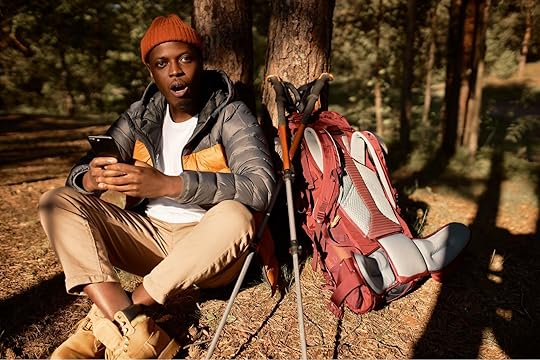
It’s easy to find hiking tips online, but it’s just as important to know what not to do when you hit the trails, too.
Whether you’re a first-time hiker or have been peakbaggin’ for years, some things are obvious — most people know not to go hiking in flip-flops or leave plastic food wrappers in the woods. But there’s a lot more to the culture of hiking that you might not know, and some hiking tips only focus on things you should do, not things you shouldn’t do. But knowledge is power, and the list of hiking tips before focuses on hiking taboos — things to never do, unless you want to be the least-popular person on the trail.
Sure, hiking tips are great, but hiking taboos are pretty important to know, too.
1. Playing loud music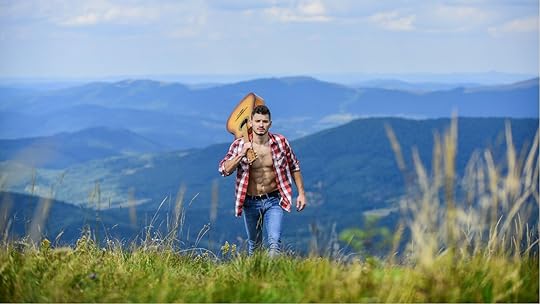
Seen here: some dude carrying his guitar back up a hill, presumably after another hiker through it off the cliff out of sheer annoyance. Photo: Just dance/Shutterstock
I know this may be hard to hear, but bear with me: your music isn’t that good. And even if it was, your fellow hikers don’t want to listen to it. That goes for any music, even music that’s David-Bowie-Circa-Ziggy-Stardust levels of good. For many hikers, being outdoors is a chance to enjoy the sounds of nature or have a conversation with their trail partners. Blasting your music — which, by the way, sounds terrible to anyone not directly next to your speaker — is not only rude to everyone else on the trail but can scare animals and be disruptive to the environment.
If you want to listen to music (or, my favorite, a podcast), totally cool. Just wear headphones (but make sure you can still hear people and animals around you on the trail). Wearing one headphone and keeping the other ear free can be a good solution for listening to music while still ensuring you can hear people coming up behind you.
2. Being a close-walker
I really hope these two people know each other. Otherwise, awk-ward. Photo: Bkrzyzanek/Shutterstock
Just like you shouldn’t play music to ensure your fellow hikers can enjoy the outdoors, so too should you not invade their personal space. Sure, it’s inevitable on some trails — no one is expecting space to themselves if they decide to hike up Yosemite Falls on a Saturday afternoon. But for an average trail, it’s good to give everyone as much personal space as possible. What’s that look like in real life? Just be courteous: if a faster group comes up behind you, let them pass rather than trying to speed up. If you and another group appear to be moving at the same pace, consider taking a long break to let them move ahead, or speeding up for a while to create some distance.
3. Littering of any kind
I really hope she’s picking up trash and not setting down trash she weirdly brought with her in that black plastic bag. Photo: Africa Studio/Shutterstock
The most important rule to remember on the trails is do not litter. For your benefit, don’t litter, as reactions from your fellow hikers could range from dirty looks to reporting you to a park ranger to something far more confrontational. But really, don’t litter because it’s horrible for the planet and people; what’s the point of making so much effort to spend time in nature if you’re just going to fill it with trash?
And remember: littering isn’t just plastic bottles and cigarette butts. Litter is anything that doesn’t occur naturally in the environment you’re in, including things like banana peels, coffee grounds and liquid, and toilet paper. If there’s no other hiking tip you remember, remember this one.
4. Smoking like a chimney
A guy displaying bad behavior. (Unless there’s just a tiny trail behind him in the distance, in which case, sorry, guy.) Photo: Yuliia Hurzhos/Shutterstock
I’m not here to tell you how to live your life, and if you smoke cigarettes, that’s up to you. But the last thing anyone wants is to smell cigarette smoke when they’re enjoying the fresh air — nor does anyone want a forest fire to start because someone was careless with their cigarette butt (oh, and if you do start a fire, even on accident, expect to go to jail). While it seems a little strange to huff and puff up a mountain only to smoke a cig at the top, you’re allowed certainly allowed to. But you need to go as far away from other hikers as possible, especially if there’s a breeze. And always try to smoke downwind whenever possible.
In the hiking community, you’ll generally find that most folks are kinder to cannabis than nicotine. But all the same, it’s best not to light up if there are other people around, regardless of what you’re smoking.
5. Not moving when you should
Do hikers have the right of way when encountering a horse on the trails? Neigh. Photo: my leap year/Shutterstock
If you’re on a trail built just for hikers, it’s pretty easy: people going uphill have the right of way, so all you have to do is step aside if someone is coming up while you’re coming down. But on mixed-use trails, there’s a different hierarchy: everyone yields to equestrians, hikers yield to equestrians but not bikers, and mountain bikers yield to everyone. But in a real-world hiker-biker situation, it’s almost always easier for the hikers to step aside, especially if a mountain biker is trying to climb up a steep section.
When encountering equestrians, try to step off the trail enough to give the horses a few feet of space, but you don’t need to move too far. Horses get spooked easily, and it’s better if they can see you rather than you ducking behind a rock.
If you’re a hiker, it’s nice to yell when a mountain biker passes you something like “just me” or “one more up ahead,” so the biker knows if they need to keep an eye out for more people (and if you’re biking, you should relay the same information to any hikers you pass). Make sure you can hear people coming and going behind you if you’re wearing headphones.
6. Feeding and bothering wildlife
One guess who the smarter creature in this photo is (hint: it’s not the guy feeding a wild animal). Photo: TetiBond/Shutterstock
It may seem cute to throw a piece of your trail bar to a chipmunk, but it’s not — it’s harmful to the chipmunk. When hiking, it’s important to remember that you’re in an animal’s home, and the onus is on you to have as little impact as possible. It’s your responsibility to keep wildlife wild. And when you feed animals, they begin to associate people with food, which is the exact opposite of being wild. Your food could also be harmful to the animals, or it could cause them to start seeking out humans, resulting in that animal being euthanized. This is a big part of why you shouldn’t leave food on the trails, even if it will (eventually) decompose.
On that note: if you’re hiking in a national park, read up on the wildlife regulations specific to that park; for example, Yellowstone National Park requires you to stay at least 100 yards from wolves. You can be fined or jailed for getting too close to wild animals. If you’re not sure how close you can get, use this general rule: if the animal has to change its behavior at all because of you, you’re too close.
7. Letting your dog run amok
There’s no joke here: this is my dog, and I wanted you to see how cute he is. He would never commit a hiking taboo, though. Photo: Suzie Dundas
It should go without saying that dogs can only accompany you on dog-friendly trails (which many in national parks are not, by the way). But just because a trail is dog-friendly doesn’t mean it’s free rein for your dog to go crazy. If not on a leash, your dog still needs to be under your voice command. Your fellow hikers may have a fear of dogs, or they may be with their own dogs who don’t appreciate having an off-leash pup run directly into their faces. My dog is my favorite trail buddy on the planet, but a domestic dog is not a natural part of a woodland environment. They can spook wildlife like bears and rabbits, and their scents can confuse smaller mammals.
And don’t forget that allowing your dog to roam free may expose him to water-borne pathogens like giardia, small predators like rattlesnakes and scorpions, or random things in the woods that could make him or her sick. (Did you know South Lake Tahoe’s mice sometimes carry the bubonic plague? You don’t want your dog eating one of those mice.)
Oh, and by the way: don’t ever, ever, ever leave your dog’s poop bag in the woods. Seriously — if you forgot it, drive back and get it. Leaving it next to a trash can at the trailhead is littering.
8. Defacing trees and rocks
C and B are total jerks and have hopefully learned the error of their ways since 2013. Photo: serato/Shutterstock
Fun fact: it’s possible to go for a hike without letting everyone know you were there. Leaving an impact on the environment is one of the most egregious taboos on the trails; that’s why hikers should practice Leave No Trace principles. But the most egregious — and most illegal — offense is to purposefully deface or vandalize protected sites. That includes scratching your initials into trees (which kills trees), leaving marks on rocks or, unfathomably, defacing sacred, protected, or historical sites. Penalties depend on the state and who prosecutes you, but you could be looking at fines of $50,000 or more and up to three years in jail.
9. Blazing your own trail
Some hikers, like this child, are weirdly in love with mushrooms. Please don’t break his heart by going off the trail and stepping on them. Photo: Stock video footage/Shutterstock
While hiking, you may think you’re actually being curious by taking a shortcut through the trees to pass people on the trails. But nope: you should always try to stay on the established trail. Going off trail can damage small plants, and the combination of those plants dying and heavy foot traffic can lead to erosion and runoff problems (many trails are intentionally routed to direct drainage and runoff from rain and snowmelt). Blazing your own trail damages ecosystems, even it’s only going around a few trees. Veering very far off trail can also be dangerous if you get injured as it’ll be much harder for rescue teams to locate you. 
More like thisHiking10 tips for safe and comfortable winter hiking
Matador Network's Blog
- Matador Network's profile
- 6 followers



